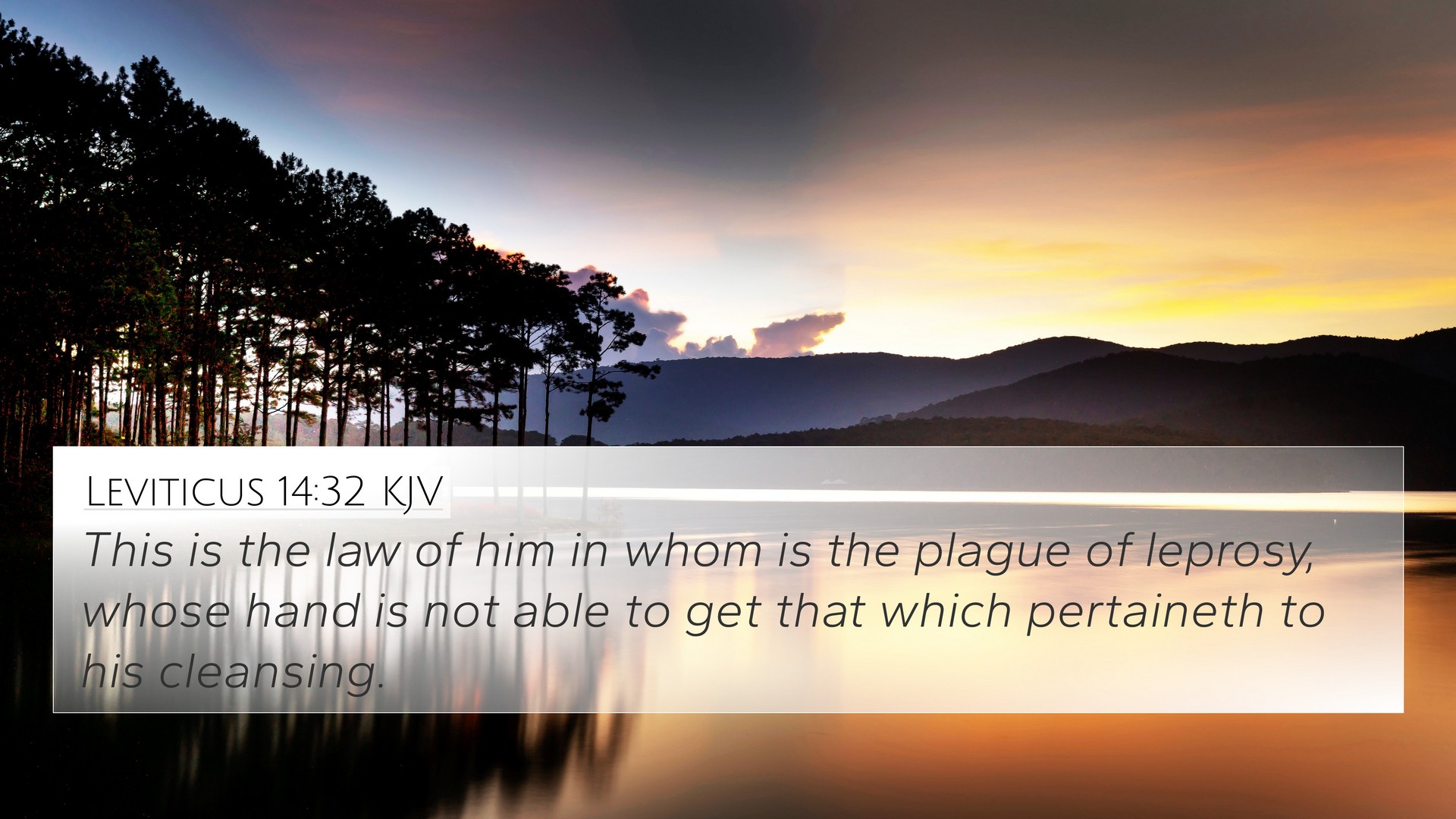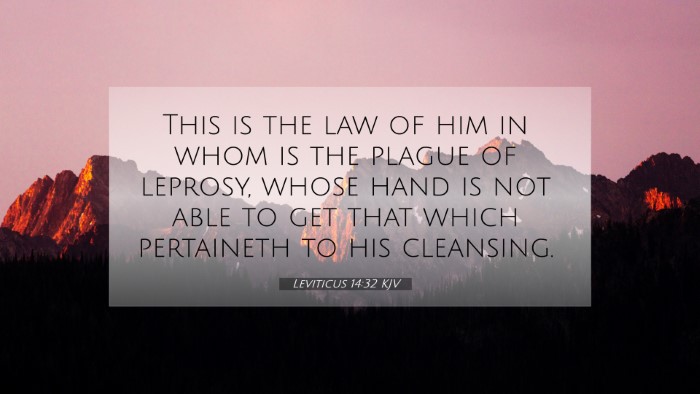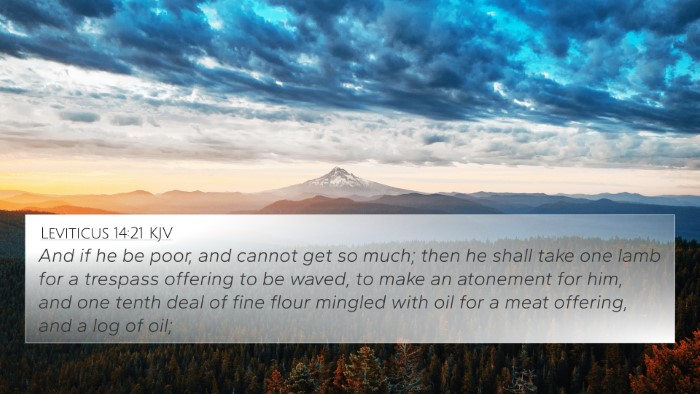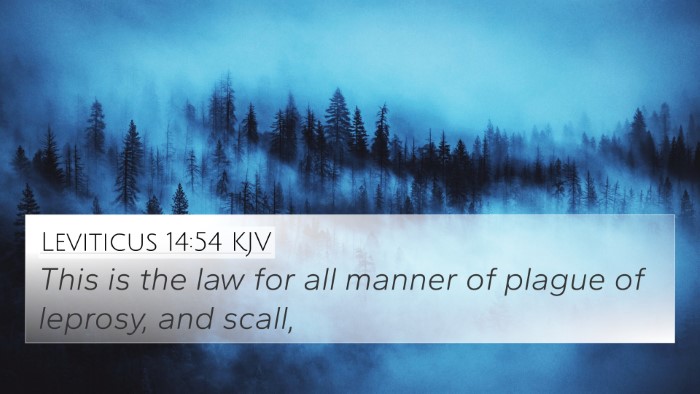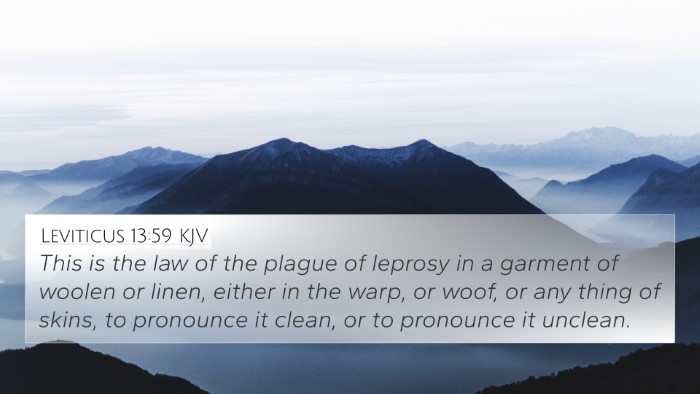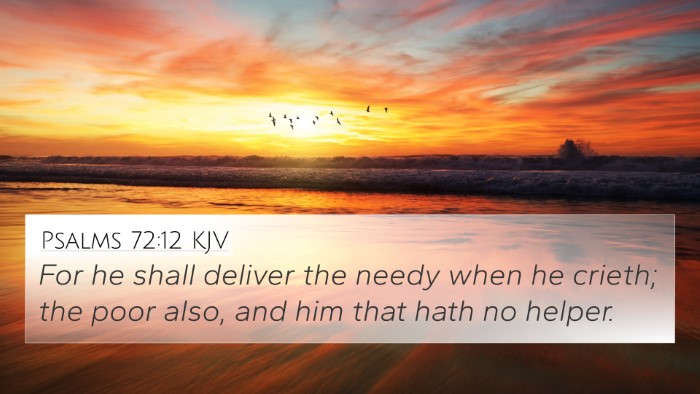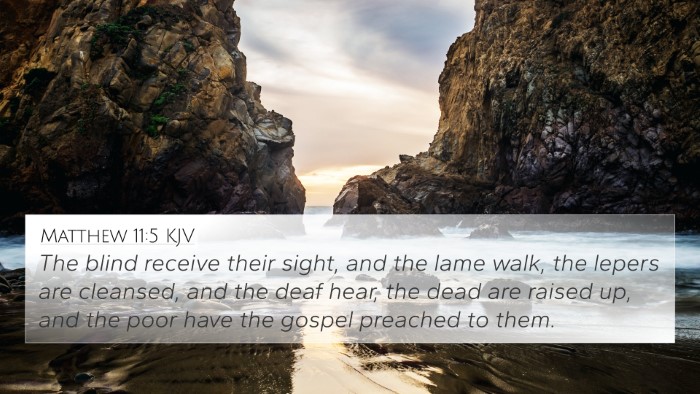Understanding Leviticus 14:32
Leviticus 14:32 states:
"This is the law of the leper in the day of his cleansing: Now he shall be brought unto the priest."
This verse describes the specific procedures that must be followed when a person who has been afflicted with leprosy is declared clean. The role of the priest is crucial in this process, as he is the one who validates the healing and facilitates the restoration of the individual to the community. Below, we explore a comprehensive understanding of this verse, drawing on insights from various public domain commentaries including those by Matthew Henry, Albert Barnes, and Adam Clarke.
Verse Interpretation
According to Matthew Henry, this verse highlights the importance of ritual purity and the role it plays in spiritual and communal restoration. The leper, once isolated due to their condition, can now be restored not only to health but also to their community. The act of being brought to the priest symbolizes a significant transition from a state of uncleanliness back to a state of acceptance.
Albert Barnes expands on this notion by emphasizing that the laws regarding leprosy serve a dual purpose. Firstly, they provide a physical cleansing process that reflects spiritual truths. Secondly, these laws reinforce the community structure within Israelite society by regulating what it means to be restored. The priest's role is not merely functional but represents God's authority in matters concerning holiness and restoration.
Adam Clarke provides historical context to this healing process, indicating that leprosy in biblical times was a feared and misunderstood disease, often equated with sin and moral failure. Clarke suggests that the cleansing of a leper thus acts as a metaphor for spiritual renewal, where the clean signify those who have been forgiven and restored through faith.
Thematic Connections
This verse serves as a nexus for several broader biblical themes, particularly pertaining to themes of cleansing, restoration, and community. It connects deeply to various other scriptures, revealing the interconnected nature of the Bible.
Cross-References and Connections
- Matthew 8:1-4 - This passage describes Jesus healing a leper and telling him to go to the priest to be declared clean, directly linking to the cleansing rituals outlined in Leviticus.
- Luke 17:12-14 - Another narrative of Jesus healing ten lepers, reinforcing the importance of the priest's role in confirming healing.
- Exodus 12:5 - The concept of being without blemish, similar to the standards required for the leper's cleansing.
- Isaiah 53:4-5 - A prophetic reference that speaks of Christ bearing our infirmities, aligning physical healing with spiritual restoration.
- 1 Peter 2:24 - This verse alludes to the healing provided through Christ, reinforcing the connection between physical and spiritual healing.
- James 5:14-15 - Instruction about the elders anointing and praying over the sick, showing ongoing significance of community in healing.
- Revelation 21:4 - A promise of ultimate healing and restoration in the eschatological context, connecting to the hope and renewal superseding ritual laws.
Application and Importance
The significance of Leviticus 14:32 extends beyond ancient Israelite culture into contemporary Christian practice. The verse serves as a reminder of the importance of community and the role of spiritual leaders in the process of healing and reconciliation.
In the New Testament context, the work of Christ fulfills the law of leprosy outlined in this chapter, as He embodies the ultimate Priest whose sacrificial work cleanses all from sin, equating physical healing with spiritual redemption. As believers reflect on this passage, it can encourage deeper engagement with scripture through Bible verse cross-references, enhancing understanding of Biblical themes related to cleansing, community, and holiness.
Conclusion
To fully grasp the meaning of Leviticus 14:32, we must consider both the immediate implications in the life of an Israelite and the broader spiritual truths it heralds throughout scripture. By leveraging tools for Bible cross-referencing, such as concordances and study guides, we can bridge connections between old and new testament texts, thereby enriching our understanding of Bible verse parallels.
In conclusion, Leviticus 14:32 serves not only as an instruction for ancient rites but also as a timeless reminder of how cleansing and restoration play out within the body of Christ today.
